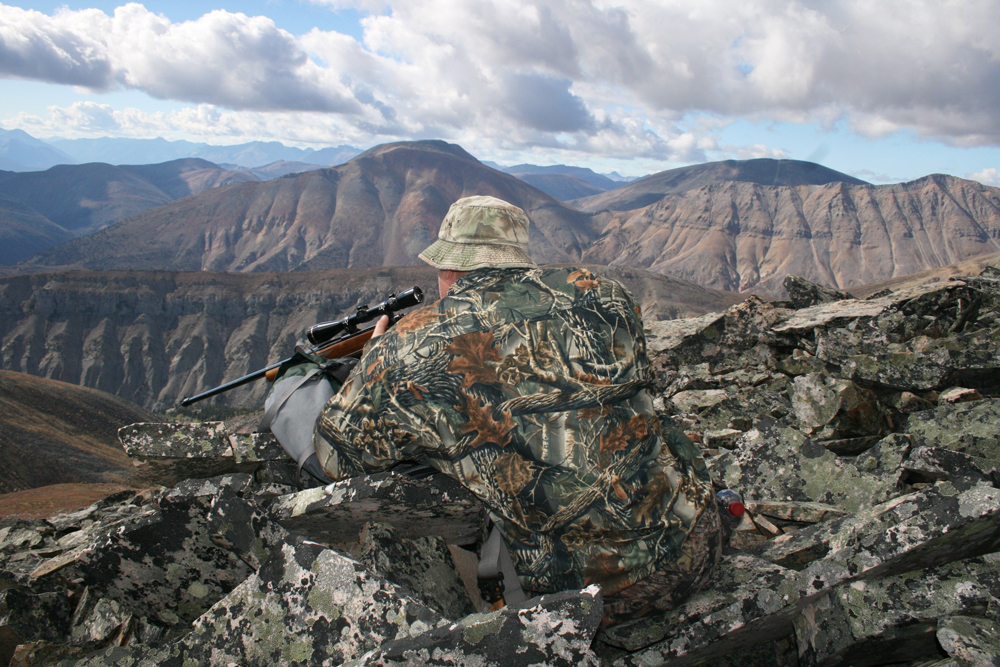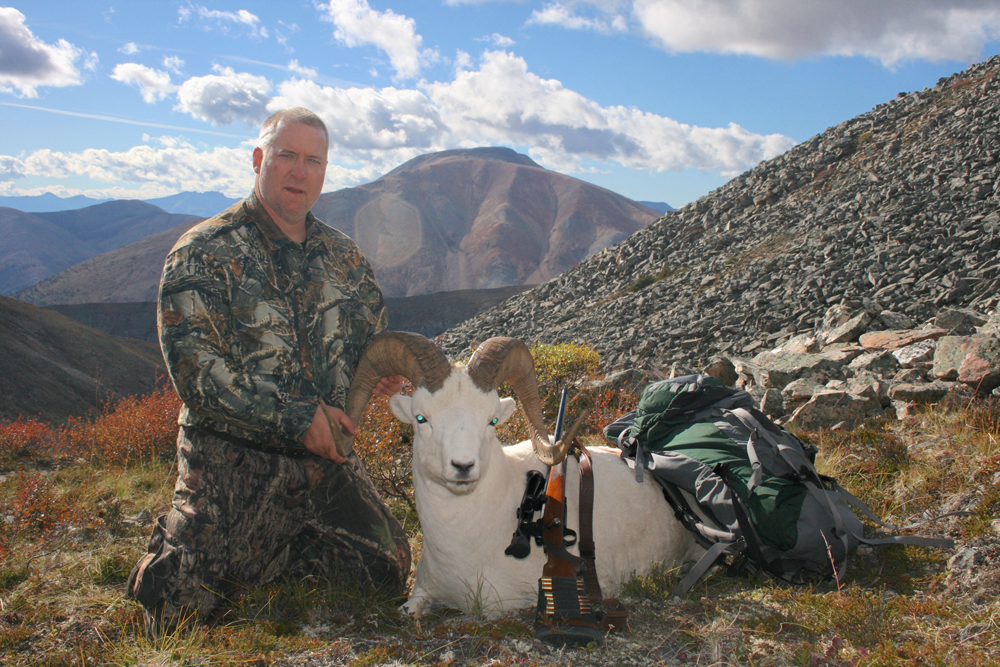“He’s a good ram,” my guide Cory said, “at least 8½ years old, full curl, definitely better than 36 inches.”
“How far?” was my query. The reply—”391 yards”—hit me like a bucket of cold water. I had practiced out to 400 yards from hunting positions and had carefully developed a handload for my rifle that was both flat shooting and minute-of-angle accurate, but 400 yards is still a long way. Multiple things have to go right to make a shot of that distance, and shooting at an animal is much different than shooting at paper. “Any way we can get closer?”
The answer was “No.” The only route that would afford cover would give them our scent long before we could get into position.
I decided to wait until the bedded rams got up in the hope that they would move closer. I found a stable position using my pack as a rest, doped the wind, fidgeted, and tried to relax.
We were sitting on a granite-jumbled mountainside, watching a bachelor group of Dall’s rams in Canada’s Northwest Territories. In my rifle were handloads I had developed specifically for this hunt of a lifetime.
The first decision when cooking up a load for this hunt was which cartridge to use. The classic sheep cartridge, thanks to Jack O’Connor, is the .270 Winchester. My dad even built a .270 to O’Connor’s specifications before I was born. However, I was unwilling to risk Dad’s rifle with the airlines and the mountains; plus caribou and moose were also on the license.
I ultimately decided to use the .300 Winchester Magnum, which can handle any animal in North America.
With the cartridge decided upon, the next decision was bullet weight. A careful review of the ballistic information available for the .300 Win. Mag. points to the 180-grain spitzer bullet as providing the optimum downrange capability, as well as the best combination of sectional density, ballistic coefficient, and velocity. In addition, many sources indicate that 180-grain bullets are often more accurate than lighter bullets in the .300 Win. Mag. That is certainly true with my rifle; it clearly prefers 180- and 200-grain bullets over 150- and 165-grain bullets.
The next step was to develop the optimum load for my rifle. I used neck-sized cases for maximum accuracy and to headspace the belted cartridge at the shoulder. I developed a safe (for my rifle) optimum load by beginning with a proven starting load and working up, using a powder and primer recommended by most loading manuals. I checked for visual pressure signs, recorded the velocity, and documented the accuracy for each load. The end result was the best combination of accuracy and velocity with only minor pressure signs. To guard against any possibility of case failure, I carried only once-fired cases on the hunt.

On top of the world looking down on creation.
The next questions to answer were which 180-grain spitzers were most accurate in my rifle, and would they do the job on all three targeted species? I tested four bullets for accuracy, two boat tail and two flat base, using the same load for each.
It turns out my rifle likes flat-base bullets, period. Of the two flat-base bullets, the best groups were produced by a “soft” bullet—perfect for sheep and caribou, but possibly too frangible for moose.
The other flat-base bullet grouped almost as well. It was a more heavily built bullet that would expand less but penetrate more deeply—better for moose, and much better if a grizzly decided to enter our tent while we were inside.
Here is where I got lucky: they both shot to nearly the same point of impact at 100 yards. I decided to take both.
The last step was to practice, practice, practice. My records show that I fired exactly 218 rounds downrange in 11 shooting sessions at distances ranging from 100 to 400 yards, mostly from hunting positions. I sighted the more accurate bullet in 2½ inches high at 100 yards. This would enable me to hold “in the hair” out to 300 yards on the sheep.
My practice at 300 and 400 yards, prone, using my backpack as a rest or with a tight sling and shooting at animal-silhouette targets, was particularly helpful. Determining what scope magnification was optimum at what distance and developing a consistent aiming point to account for bullet drop proved invaluable.

The .300 Win. Mag. loads packed plenty of punch, even at 400 yards.
We watched the rams for 20 minutes, at which point they began to stir and stretch, then slowly move—away, naturally. Cory told me they were definitely leaving and that if I was going to shoot, now was the time. Then he said, again, “Whatever you feel comfortable with” in response to my last “What do you think?” I had been looking for some positive reinforcement, but he remained completely non-committal each time. The decision was to be mine, and mine alone.
The ram turned broadside; decision time.
“I’m going to take the shot.” Safety off, relaxed hold, controlled breathing, sight picture, and love that trigger.
The shot broke cleanly. The recoil kicked me off the scope, and as I worked the bolt swiftly and got back on the rifle, I could see white dots running below. As I sought to reacquire my ram among the running sheep, I called to Cory. “Do you see blood?”
His response was music to my ears. “You nailed him!”
I swung back, and there he was, kicking his last kick right where he had stood 405 yards away. The handload I developed had done its job, and the time and effort spent developing it and mastering its capabilities had just been paid for many times over.
Equal parts proud, thankful, and relieved, I made my way down to him. He was 9½ years old, just over 37 inches, and now he is mine forever.

